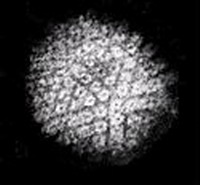Login form
Virus – Are they Organism?
 A virus is a sub-microscopic infectious agent that is unable to grow or reproduce outside a host cell. Each viral particle, or virion, consists of genetic material, DNA or RNA, within a protective protein coat called a capsid. The capsid shape varies from simple helical and icosahedral forms, to more complex structures with tails or an envelope. Viruses infect all cellular life forms and are grouped into animal, plant and bacterial types, according to the type of host infected.
A virus is a sub-microscopic infectious agent that is unable to grow or reproduce outside a host cell. Each viral particle, or virion, consists of genetic material, DNA or RNA, within a protective protein coat called a capsid. The capsid shape varies from simple helical and icosahedral forms, to more complex structures with tails or an envelope. Viruses infect all cellular life forms and are grouped into animal, plant and bacterial types, according to the type of host infected.
Examples of common human diseases caused by viruses include the common cold, influenza, chickenpox, diarrhea and cold sores. Serious diseases such as Ebola, AIDS, avian influenza and SARS are caused by viruses. The relative ability of viruses to cause disease is described in terms of virulence.
Viruses have different mechanisms by which they produce disease in an organism, which largely depends on the species. Mechanisms at the cellular level primarily include cell lysis, the breaking open and subsequent death of the cell. In multicellular organisms, if enough cells die the whole organism will start to suffer the effects. Although viruses cause disruption of healthy homeostasis, resulting in disease, they may exist relatively harmlessly within an organism. An example would include the ability of the herpes simplex virus, which cause cold sores, to remain in a dormant state within the human body. This is called latency, and is a characteristic of the herpes viruses including the Epstein-Barr virus, which causes glandular fever, and the Varicella zoster virus, which causes chicken pox. Latent chickenpox infections return in later life as the disease called shingles.Some viruses can cause life-long or chronic infections, where the viruses continue to replicate in the body despite the hosts' defense mechanisms. Biologists debate whether or not viruses are living organisms. Some consider them non-living as they do not meet all the criteria used in the common definitions of life. For example, unlike most organisms, viruses do not have cells. However, viruses have genes and evolve by natural selection. Others have described them as organisms at the edge of life. Viral infections in human and animal hosts usually result in an immune response and disease. Often, a virus is completely eliminated by the immune system. Antibiotics have no effect on viruses, but antiviral drugs have been developed to treat life-threatening infections. Vaccines that produce lifelong immunity can prevent viral infections.


